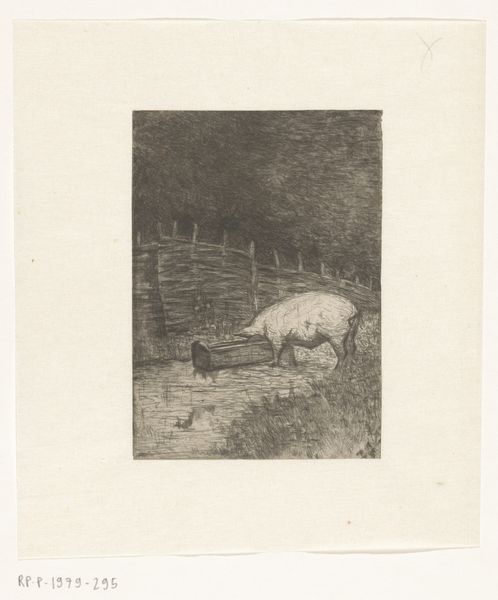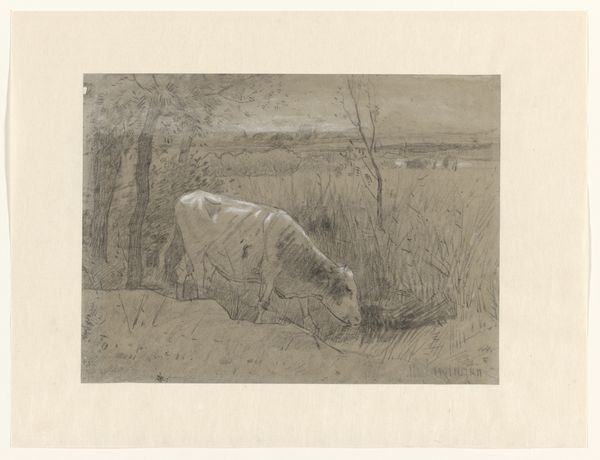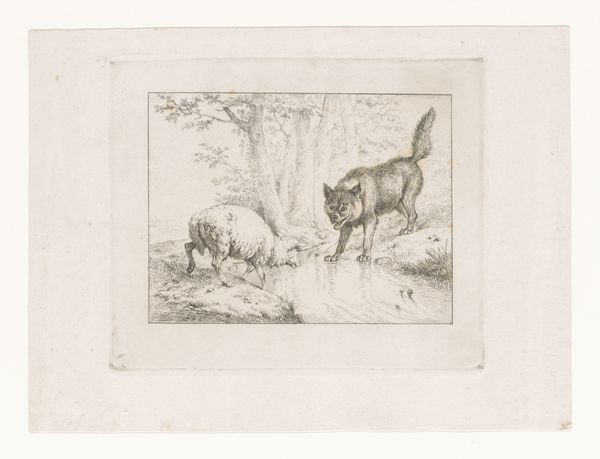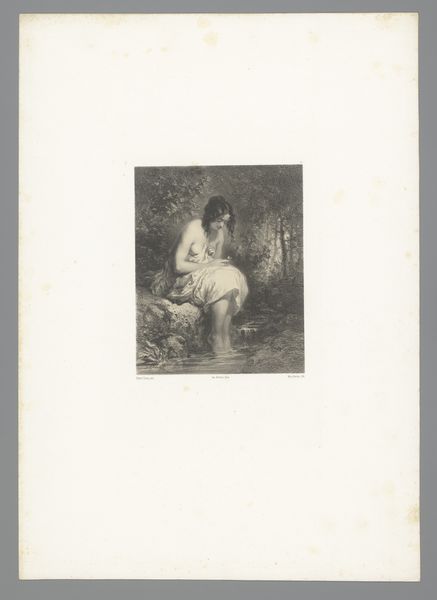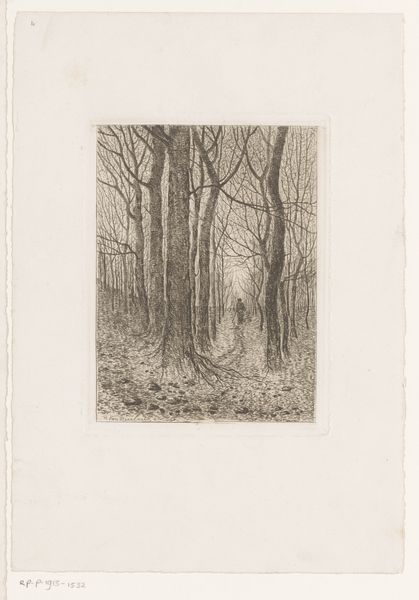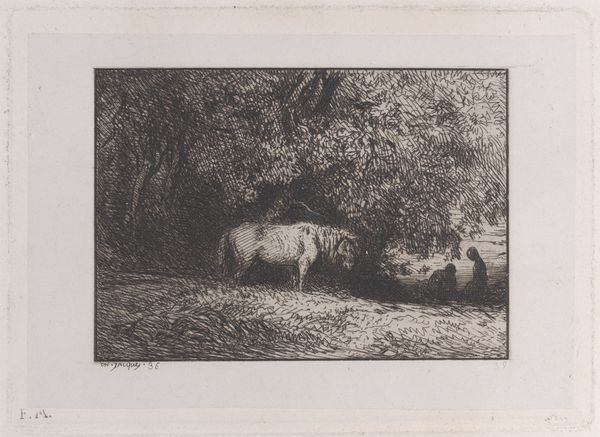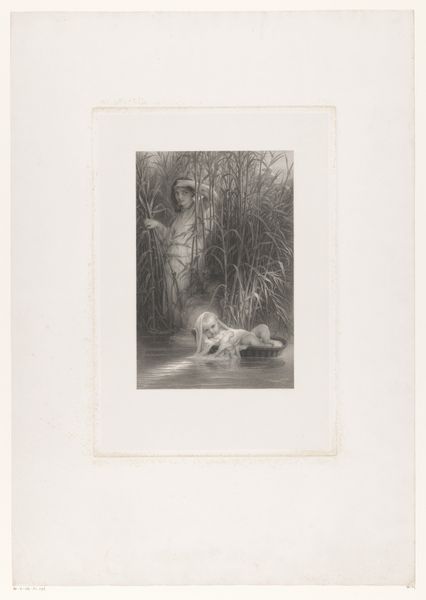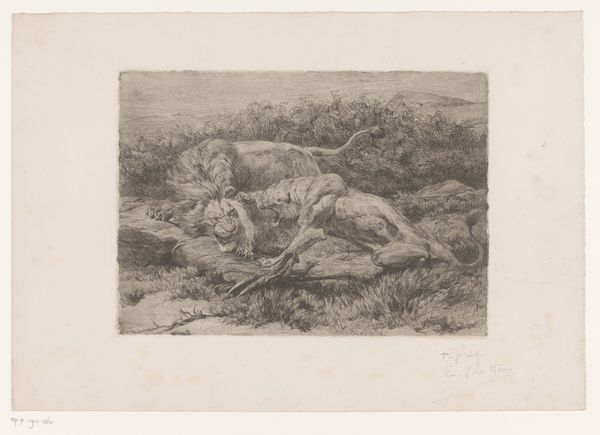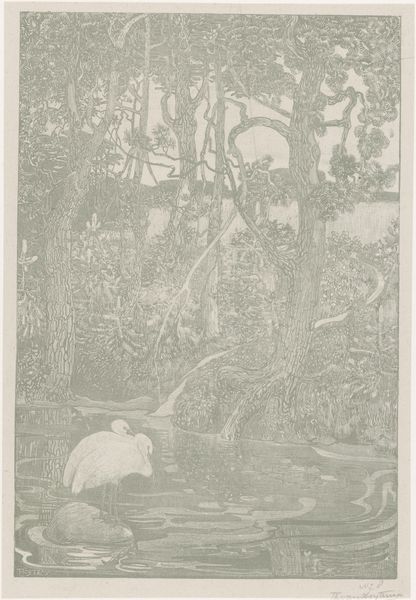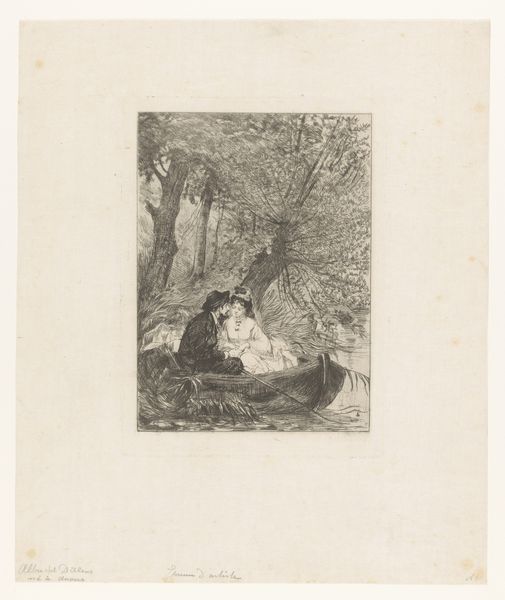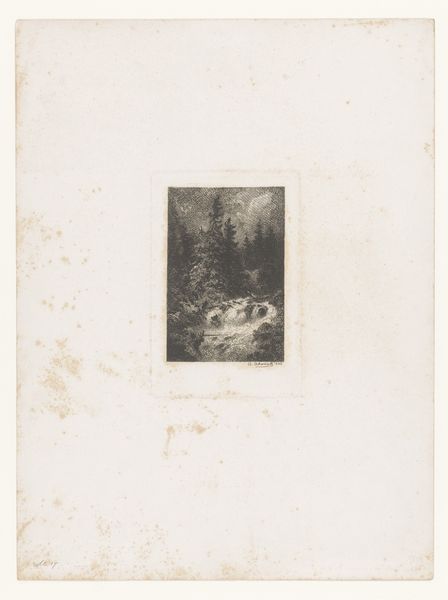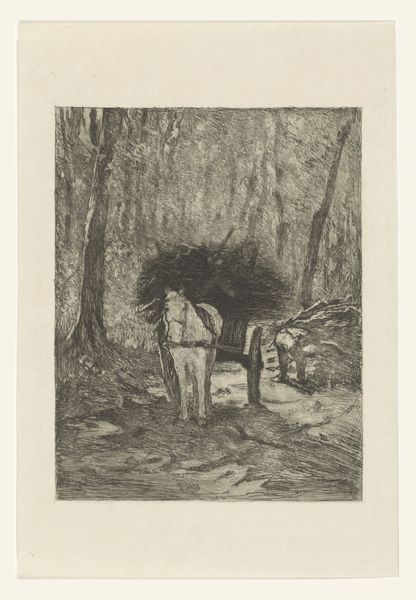
drawing, pencil
#
drawing
#
animal
#
dutch-golden-age
#
landscape
#
pencil
#
realism
Dimensions: height 239 mm, width 180 mm
Copyright: Rijks Museum: Open Domain
Editor: Here we have Willem Witsen’s "Two Pigs by a Trough," a pencil drawing made around 1882 to 1884. The texture created by the pencil gives a very rough and earthy feel. What do you make of it? Curator: Well, immediately I consider the implications of Witsen choosing pencil, a readily available and relatively inexpensive material, to depict this rather unglamorous subject. The pigs are shown at their trough, participating in an agricultural production line. What's interesting is how this seemingly simple drawing blurs the lines between high art and everyday labor. Editor: That’s an interesting perspective, the connection between the labor involved in livestock and the labor of producing the art itself. Does the "realism" tag also connect with the labor context? Curator: Exactly. Realism, in its attention to the mundane aspects of life, also elevated the material conditions of the working class and rural populations to the realm of fine art. We can think about the consumption of pork in relation to both wealth distribution and material representation through art. Editor: So, in essence, this drawing becomes a commentary on the cycles of production and consumption within a particular social stratum? Curator: Precisely. Witsen is engaging with questions about what art is, who it serves, and how it represents the material world. What do we consume, materially or representationally? The humble materials of pencil and paper are thus elevated. Editor: That makes me think about the potential preciousness we now assign to “art” compared to other kinds of making. Thanks, this has really made me reconsider what's significant in this drawing. Curator: It highlights the necessity of seeing art in relation to its material conditions and its commentary on value. I'm glad it made you reconsider art making.
Comments
No comments
Be the first to comment and join the conversation on the ultimate creative platform.

